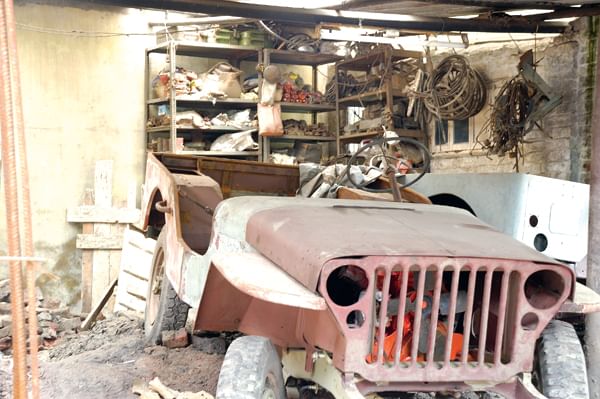Pointing to the crumbling red-brick building at the far end of the compound, I ask, “What’s in there?” “Why don’t you go take a look,” replies the dapper man with the twinkling eye called Uday Bhan Singh. “But you will need a four-wheel drive to go in there,” he says gesturing at one of his workers to get us a Jeep.

A 1988 Mahindra badged CJ3B retired from the Indian Air Force is brought into service. Drive engaged, we crawl into the building. A heavy musty smell assaults my nostrils as the headlights pierce the inky darkness. In front of me, like some prehistoric dinosaurs feeding in the swamp, lie the ghostly carcasses of half-a-dozen Jeeps standing in a pool of water. Our Jeep pitches and rolls alarmingly, as I undertake the most unique guided tour of my life. This seems like the primordial pond from which the Jeep emerged, and crawled into the earth. Or a scene from Armageddon.

